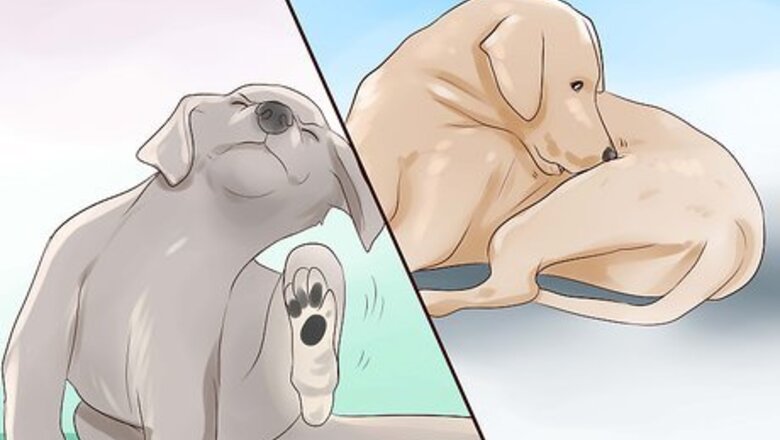
views
X
Research source
Identifying Ringworm
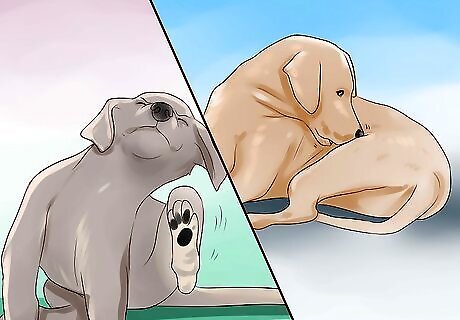
Watch for itching, signs of irritation, or nipping at parts of the body. These are often the first symptoms of ringworm. Above all, these symptoms certainly provide a good indication that you need to inspect the dog more closely.
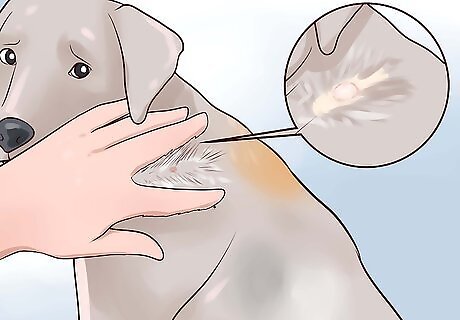
Look closely at your dog's skin. If you suspect your dog has a skin infection, you must begin by inspecting all areas that you suspect are affected. Part the dog's fur so you can see the skin clearly. Focus your attention on any areas that the dog was itching, as well as on commonly infected regions, such as the head, ears, and forelegs. To reduce the risk of spreading the possible infection, you also need to wash your hands after handling any animal you suspect has ringworm.
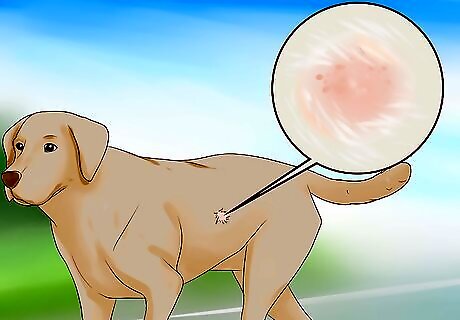
Look for bald patches where the hair has been shed. This can commonly occur on the head, ears, paws, and forearms. Are these patches circular? Do they have an bright red rim? If the answer to these two questions is yes, then the likelihood of ringworm increases. Ringworm can also show up on the dog's face and chest.
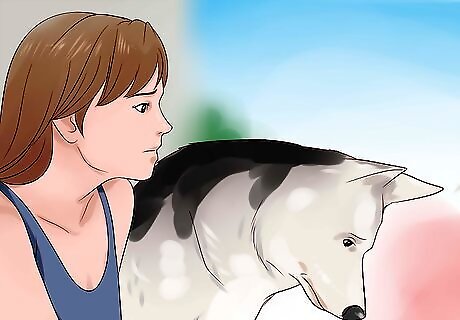
Watch any affected areas for a few days. If you see areas that appear to be infected or irritated keep an eye on them. You may be unsure if ringworm is the culprit immediately, so continue to observe the situation and see how the dog's condition develops. It can be wise to isolate the dog whilst you make up your mind. Keep him or her away from other pets and in one room with minimal soft furnishings. This will allow you to more easily vacuum the room and reduce the risk of contamination. If it turns out the dog does have ringworm, then restricting his access to other pets makes a big difference to reducing the spread and risk of infection to others. Be on the lookout for anything resembling insect bights or a more generalized rash that does not develop a circular shape. These would be indications of an alternative diagnosis--such as an allergic reaction--that would require a very different course of treatment. Ringworm infections are often the result of weakened immune systems, while generalized rashes can be caused in part by over-active immune systems.
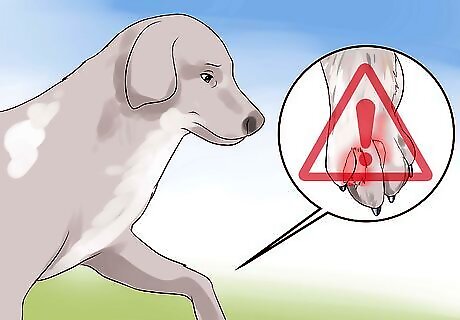
Watch the growth of any inflammation. If the lesions become bigger and more inflamed while maintaining a circular shape, it is likely to be ringworm. You will need to get your pet checked out by a vet and obtain anti-fungal medication to treat the condition.
Confirming Your Pet Has Ringworm
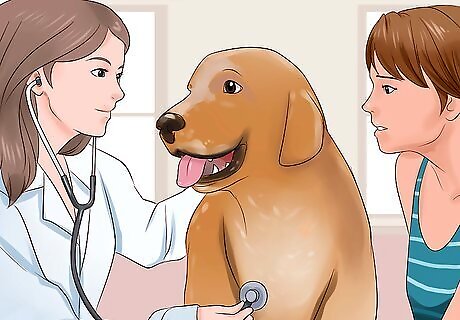
Take your dog to a veterinarian. As a general rule, if you suspect your pet has ringworm, take it to the vet to get checked out. Your veterinarian can confirm the presence of ringworm by a variety of methods and then treat.
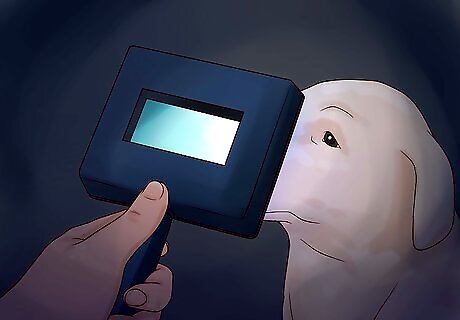
Understand what your vet is doing when he or she uses a Wood's Lamp. The Wood's Lamp is a special lamp fitted with ultraviolet bulbs and a magnifying lens. The lamp is switched on and the bulbs allowed to warm for 10 minutes. In a dark room, the animal is examined by shining the Woods Lamp onto the suspect areas and examining the response via the magnifying lens. Certain species of ringworm glow a fluorescent apple green in the presence of ultraviolet light. If this happens then ringworm is present. Your veterinarian may then wish to double check his or her findings by sending a sample away to a lab for species identification. Be aware that only about 50% of ringworm species fluoresce in this way. So, in other words, a negative on the Wood's Lamp does NOT mean the animal is clear. This is a useful way to get a quick positive, but not a conclusive negative.
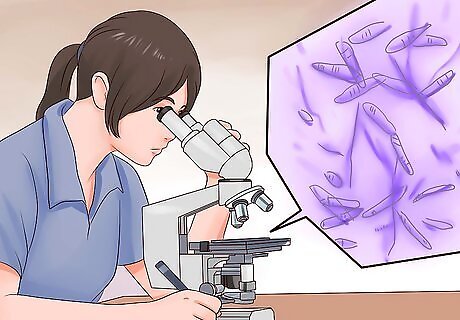
Understand what your vet is looking for when he or she examines hair follicles under a microscope. Another way to get a quick result is for the veterinarian to pluck hairs from the edge of the affected area and examine them under the microscope. Under high magnification it can be possible to see the fungal spores entwined around the hair shaft, which gives positive confirmation of ringworm.
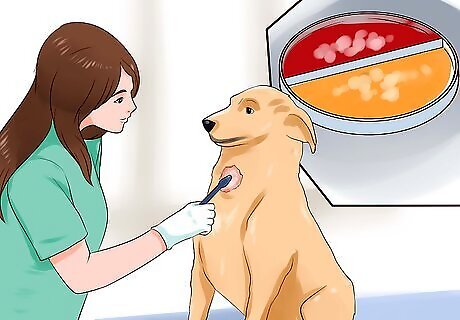
Understand that your vet will do a fungal culture if all else fails. A fungal culture will give you a definitive answer. To do this the veterinarian uses a sterile brush (such as a sterilized tooth brush) and rubs it over the affected area. The head of the brush is then pressed against a fungal culture medium, the medium container is then sealed, and set aside to see if fungus grows. Many vets use an "in house" test where the fungal culture medium changes color if fungus grows. This gives a clear indication that ringworm is present. It takes an average of 4 - 5 days for the fungus to grow and cause a color change, although the test is not considered negative until a full 2 weeks have passed with a color change.
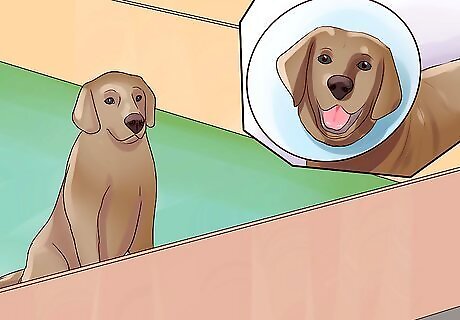
Get ringworm treated. If your dog is found to have ringworm your vet will likely prescribe an anti fungal medication. While being treated, keep your dog isolated, as the infection could still spread to other animals and even to humans. To make sure that your dog cannot ingest any topical medication, put a wide cone collar (also known as an Elizabethan Collar) on it during treatment.
Learning about the Disease
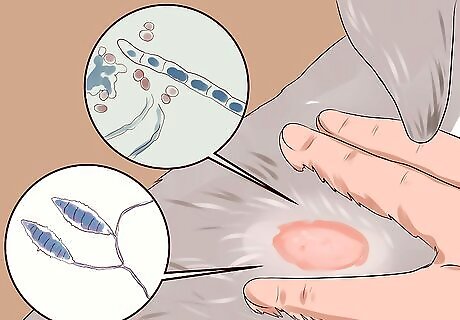
Understand that ringworm is a fungal infection. It is not, as the name might imply, an infestation by worms or bug larvae. Two species of fungus are responsible for ringworm infection, microsporum and trichophyton species. This bit of knowledge will help you understand both how the disease can spread and how to identify it.
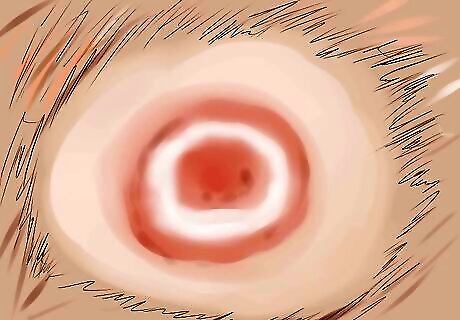
Know what ringworm looks like. As the name implies, ringworm often leaves circular marks or patches on the surface of the skin. In the early stages of infection, there is little to see other than a patch of hair loss. This is because the fungus grows down the hair shaft, the body then rejects that hair as damaged and it falls out. The skin irritation can result in itching, but even without evident rubbing the condition can contribute to hair loss in the affected region.

Learn how a dog can get ringworm. One of the primary factors that contributes to infection is immune health of the animal. Ringworm in dogs is most common in puppies and older animals, though it can also affect animals with suppressed immune systems. Dogs under stress or taking certain medications can thus be especially vulnerable. This is because the immune system keeps the flora and fauna that are normal inhabitants of the skin in check. However, if the immune system is not fighting fit, the fungus can grow unchecked and a full on infection develops. While the fungi that cause ringworm are common, contact with an especially heavy concentration of spores can increase the likelihood of infection. Heavy concentrations are really only found on other infected animals. If your dog is healthy but gets ringworm, it is probably because it was around another animal that had the disease. Ringworm is highly infectious and the infected hairs that are shed are a major source of infection for people or other pets. In order to prevent the spread of the disease, sequester infected pets and clean up all fur from the infected pet before allowing other animals in the area.















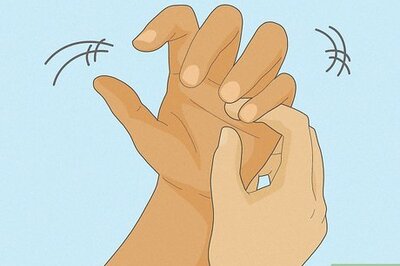
Comments
0 comment